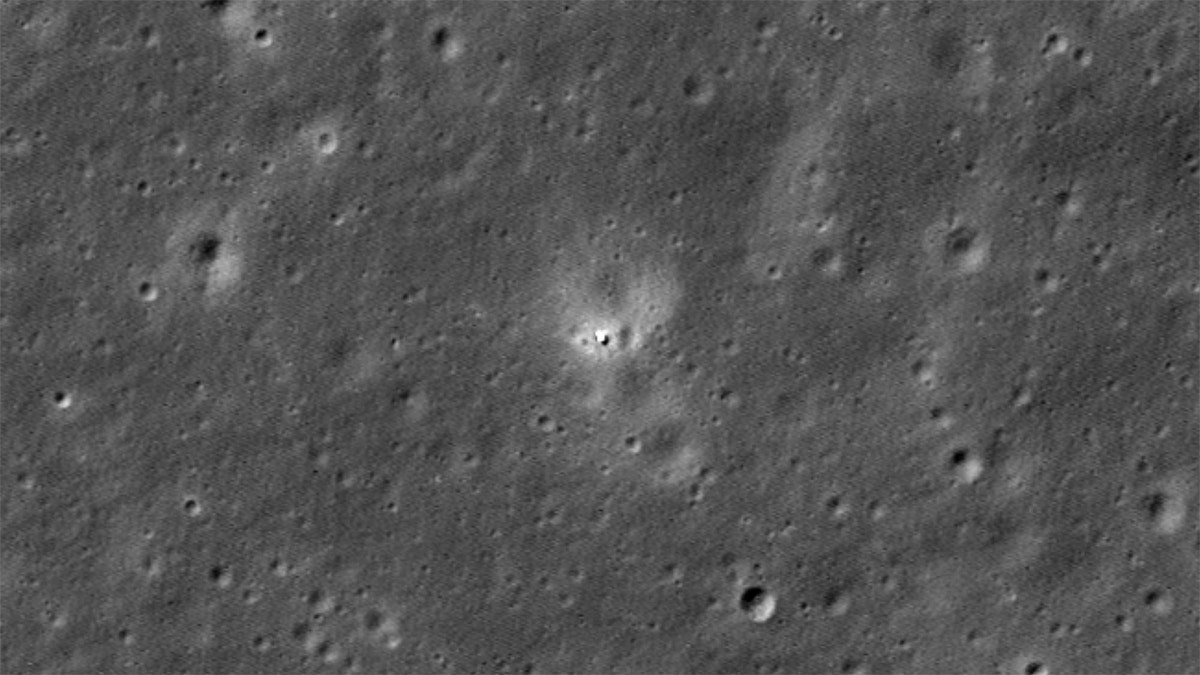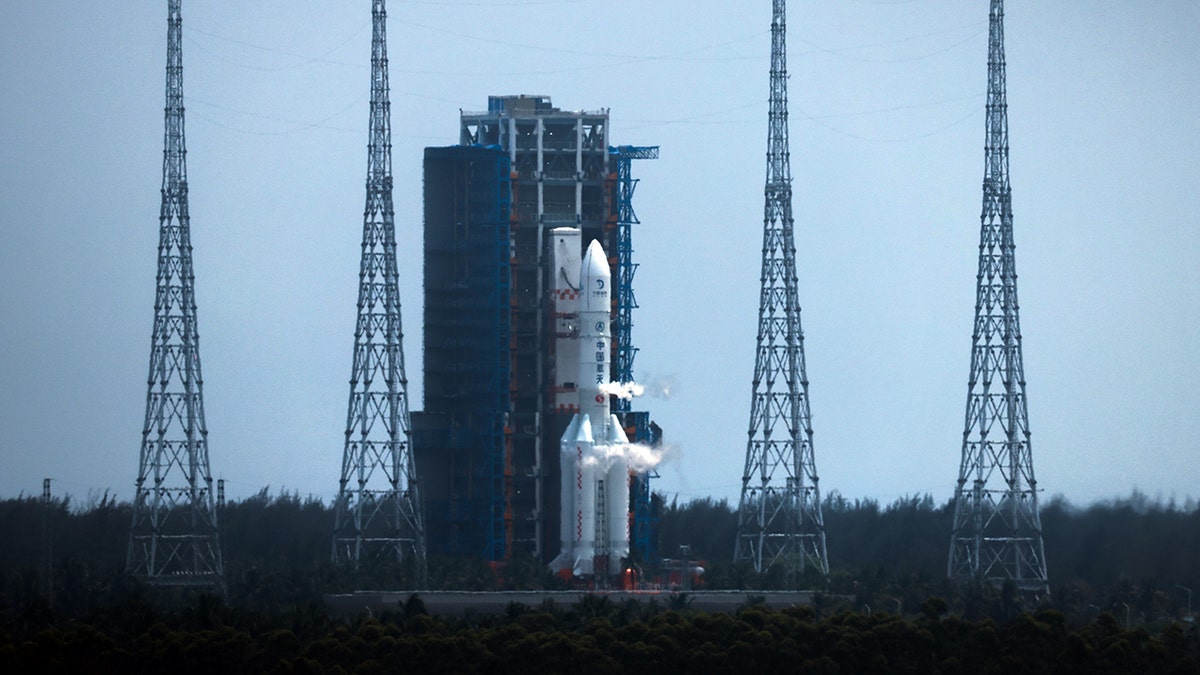Neil deGrasse Tyson: Moon landing was a 'battle cry against communism'
Astrophysicist Neil deGrasse Tyson lets 'Fox News Saturday Night' in on some little-known research on his own life.
NASA has shared the first photos taken of China's Chang'e-6 space probe captured on the far side of the moon.
The images of China's sample return spacecraft were captured by NASA's Lunar Reconnaissance Orbiter Camera (LROC) on June 7. Chang'e-6 landed on the moon on June 1 and when the LROC passed over the site about a week later, it acquired an image showing the lander on the rim of a 55-yard crater on the moon's surface, the agency said.
The LROC team said it computed the landing site coordinates at about 42 degrees south latitude, 206 degrees east longitude, at an elevation of about minus 3.27 miles.
Images released by NASA and Arizona State University show the landing site situated near the southern edge of the Apollo basin on the lunar far side.
JAMES WEBB TELESCOPE HELPS ENHANCE TECHNOLOGY FROM VIRTUAL REALITY TO LASIK EYE SURGERY

This image from NASA's Lunar Reconnaissance Orbiter Camera shows Chang'e-6 in the Apollo basin on the far side of the moon on June 7, 2024. A small cluster of bright pixels in the center of the image signifies the lunar lander. (NASA/GSFC/Arizona State University)
"Basaltic lava erupted south of Chaffee S crater about 3.1 billion years ago and flowed downhill to the west until it encountered a local topographic high, likely related to a fault. Several wrinkle ridges in this region have deformed and raised the mare surface," NASA said.
"The landing site sits about halfway between two of these prominent ridges. This basaltic flow also overlaps a slightly older flow (about 3.3 billion years old), visible further west, but the younger flow is distinct because it has higher iron oxide and titanium dioxide abundances."

This map shows where the Chinese probe is located compared to other landmarks on the moon's farside. (NASA/GSFC/Arizona State University)
Earlier this month, China said its Chang'e-6 probe unfurled the communist nation's red and gold flag for the first time on the moon before part of the space instrument blasted off to return to Earth with rock and soil samples.
Chinese officials said the mission was a success and the country hopes to put a man on the moon by the end of the decade.
NASA GETS VOYAGER 1 BACK ONLINE FROM 15 BILLION MILES AWAY AFTER TECHNICAL PROBLEM

Space instruments are seen at the Hong Kong Polytechnic University (PolyU) on June 7, 2024, in Hong Kong, China. PolyU develops and manufactures space instruments for the Nation's Chang'e-6 Mission to complete the first lunar far side sampling in human history. (Chen Yongnuo/China News Service/VCG via Getty Images)
The China National Space Administration said the spacecraft withstood a high temperature test on the lunar surface, and acquired the samples using both drilling and surface collection before stowing them in a container inside the ascender of the probe as planned.
The container will be transferred to a reentry capsule that is due to return to Earth in the deserts of China’s Inner Mongolia region about June 25.
MEDICAL BREAKTHROUGHS DISCOVERED ON INTERNATIONAL SPACE STATION

China's Chang'e-6 lunar mission rocket prepares to lift off from the Wenchang Satellite Launch Center in south China's Hainan province. (Feature China/Future Publishing via Getty Images)
"Mission accomplished!" Foreign Ministry spokesperson Hua Chunying wrote on X. "An unprecedented feat in human lunar exploration history!"
Missions to the moon's far side are more difficult because it does not face the Earth, requiring the use of satellites to maintain contact with remote spacecraft. Landing is more difficult as well, since the terrain is rugged.

The Chang'e-6 probe is being successfully launched by a Long March-5 carrier rocket from China's Wenchang Spaceport in Wenchang, Hainan Province, China, on May 3, 2024. (Costfoto/NurPhoto via Getty Images)
CLICK HERE TO GET THE FOX NEWS APP
Chang'e-6, as its name suggests, is China's sixth moon exploration program, named for a Chinese moon goddess. It is the second probe designed to return soil samples, after the Chang'e-5 probe, which launched in 2020.
China has ramped up its space program in an effort to catch up and overtake the U.S., which was the first nation to put a man on the moon. China aims to match that historic feat before 2030, which would make it the second nation to do so. NASA is planning a second mission to put astronauts on the moon with a revised target date of 2026.
The Associated Press contributed to this report.





















